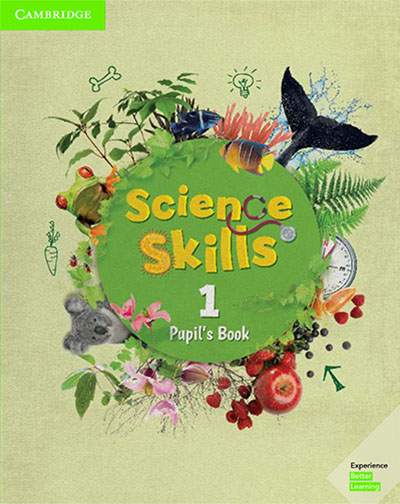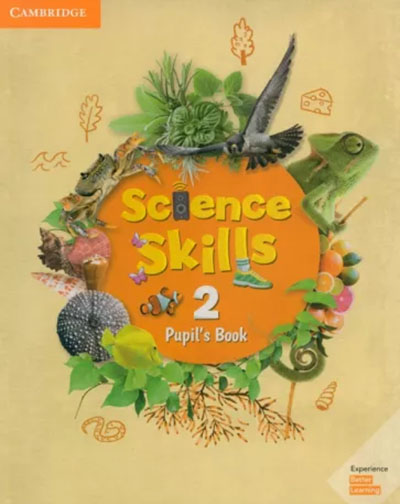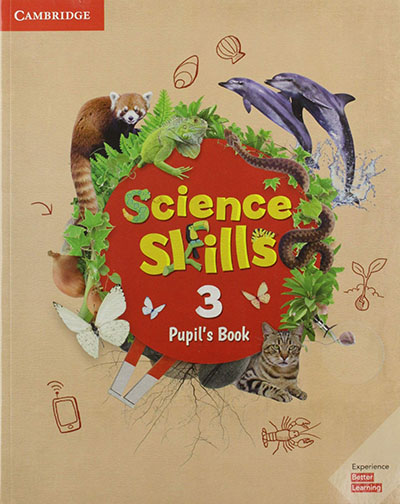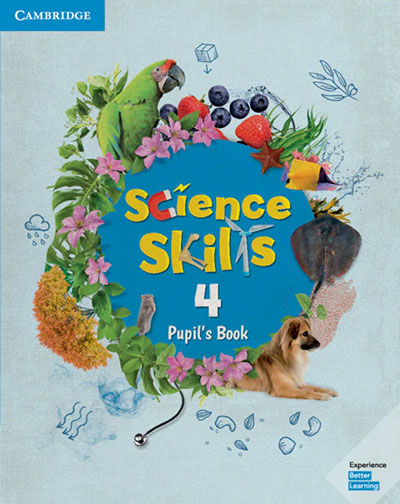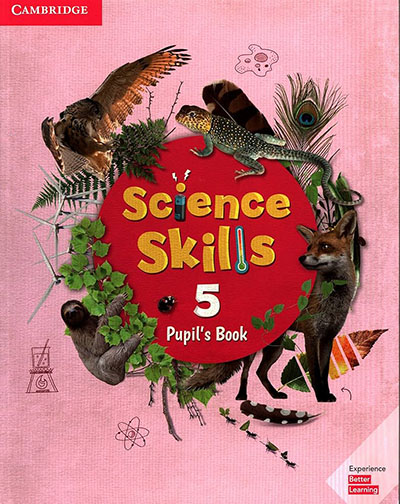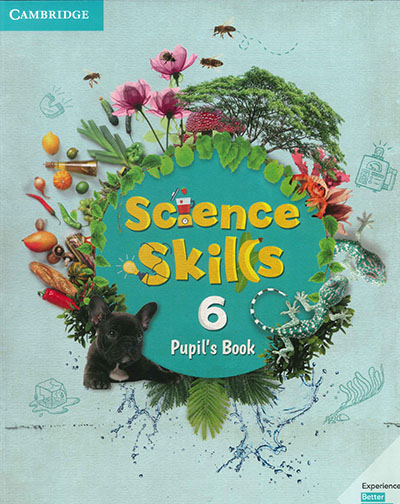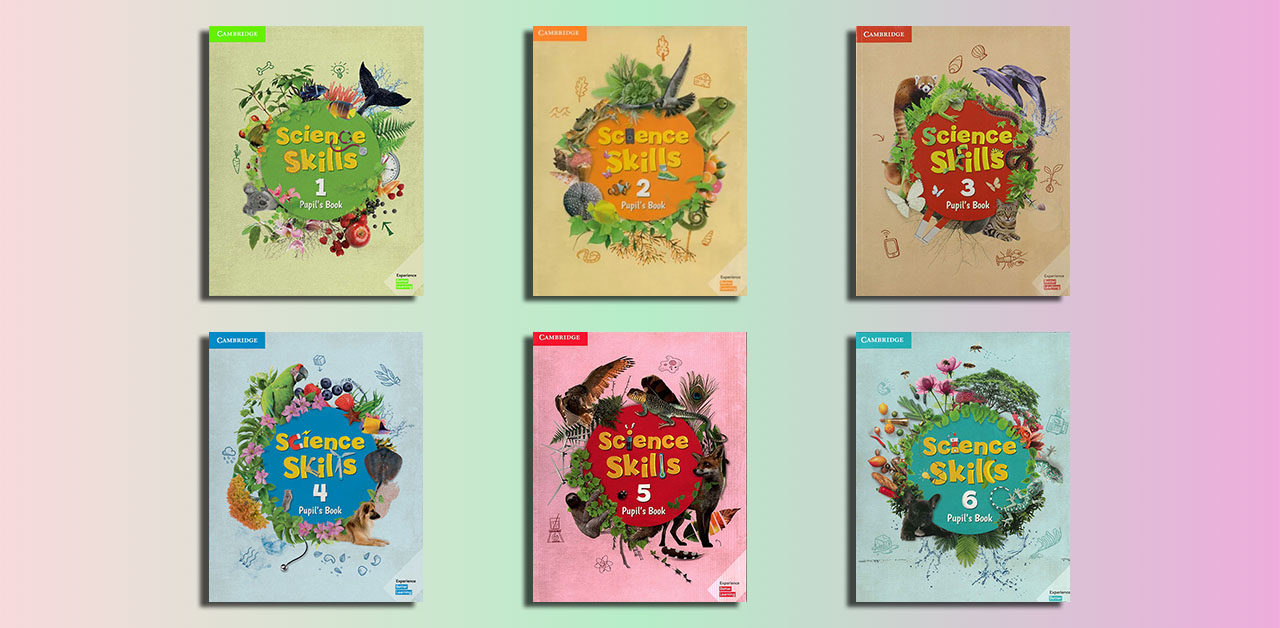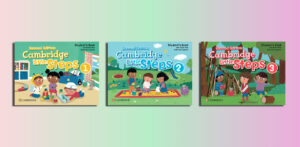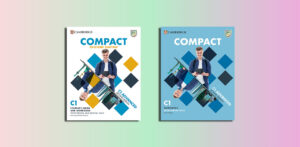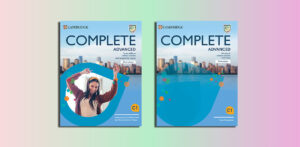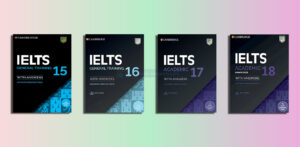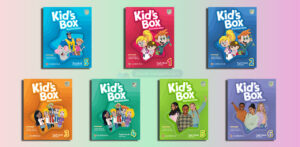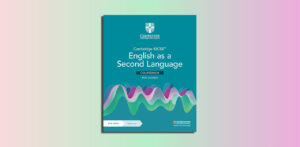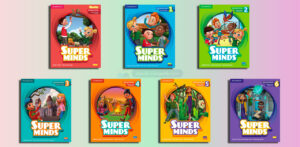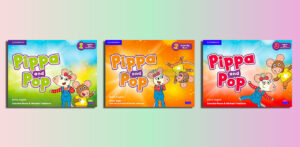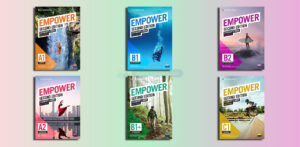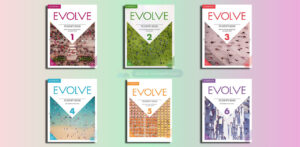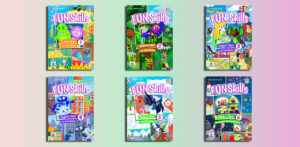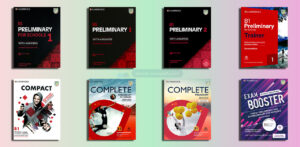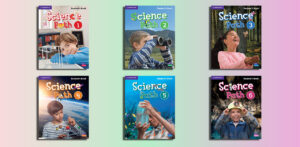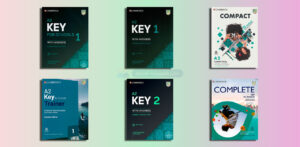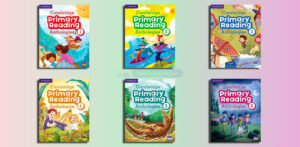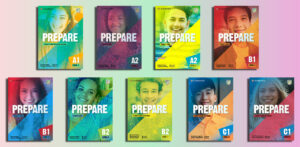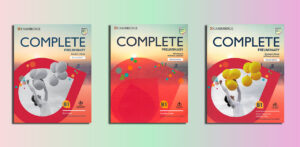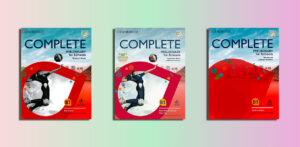Science Skills (PDFs Resources)
Level 1
Science Skills 1 Acitvity Book.pdf – Sample: Click
Science Skills 1 Pupil’s Book.pdf – Sample: Click
Arts and Crafts – Audio – Teacher’s Book – Tests
Level 2
Science Skills 2 Acitvity Book.pdf – Sample: Click
Science Skills 2 Pupil’s Book.pdf – Sample: Click
Arts and Crafts – Audio – Teacher’s Book – Tests
Level 3
Science Skills 3 Acitvity Book.pdf – Sample: Click
Science Skills 3 Pupil’s Book.pdf – Sample: Click
Arts and Crafts – Audio – Teacher’s Book – Tests
Level 4
Science Skills 4 Pupil’s Book.pdf – Sample: Click
Arts and Crafts – Audio – Tests
Level 5
Science Skills 5 Acitvity Book.pdf – Sample: Click
Science Skills 5 Pupil’s Book.pdf – Sample: Click
Arts and Crafts – Audio – Teacher’s Book – Tests
Level 6
Science Skills 6 Pupil’s Book.pdf – Sample: Click
Arts and Crafts – Audio – Tests
✅ Get Science Skills (PDFs, Resources): $6 for one level; $30 for all 6 levels
๏ Other payment methods: Click here
Overview of the “Science Skills” by Cambridge
Contents
| ✅ Coursebook: | Science Skills |
| ✅ English type: | British English |
| ✅ Levels: | Pre A1, A1, A2, B1 |
| ✅ Publisher: | Cambridge University Press |
| ✅ For: | Primary, Science |
| ✅ Publication year: | 2019 |
“Science Skills” by Cambridge refers to a dynamic, supplementary skills course designed by Cambridge University Press, primarily aimed at young learners who are studying science through English as a second language. This course is crafted to enhance students’ English language proficiency while simultaneously introducing them to foundational scientific concepts in biology, chemistry, and physics. Below is an overview based on available information:
Purpose and Approach
“Science Skills” is intended to serve as either a standalone course or a complementary resource alongside Cambridge’s English Language Teaching (ELT) textbooks. Its primary goals are to help students practice their English, expand their vocabulary, and improve their language skills within a scientific context. The course adopts an enquiry-based learning approach, where each unit begins with a question that leads to a task. Students explore the content to solve these tasks, fostering critical thinking and problem-solving skills.
The course emphasizes student-centered learning, encouraging active participation through individual or collaborative projects, investigations, and experiments. This hands-on approach not only reinforces scientific understanding but also builds practical skills and promotes learner autonomy.
Content and Structure
The curriculum takes learners on an engaging journey through the wonders of science, introducing topics gradually to ensure accessibility and comprehension. Key features include:
- Coverage of Core Sciences: Biology, chemistry, and physics are explored through age-appropriate themes and topics.
- Practical Experiments and Projects: Fun, manageable activities enhance understanding and encourage teamwork.
- Language Development: The course integrates English language practice with science content, helping students build both academic vocabulary and communication skills.
The content is brought to life with engaging elements such as:
- Characters and Stories: Relatable characters and narratives make abstract concepts more concrete.
- Songs and Chants: Catchy audio elements aid memory and engagement.
- Visuals: Vibrant photographs and illustrations support comprehension, especially for young learners studying in a second language.
Resources
“Science Skills” offers a rich array of both print and digital resources:
Pupil’s Book: The core text for students, featuring the main lessons and activities.
Teacher’s Book: A guide for educators with lesson plans, teaching tips, and additional support.
Classroom Resources: Supplementary materials to enhance lessons.
Digital Support: Available on platforms like Cambridge One, including Presentation Plus (for teachers), eBooks, and Practice Extra with videos, games, and additional skills exercises.
These resources are designed to create an interactive and lively classroom environment, making science accessible and enjoyable.
In summary, “Science Skills” by Cambridge is a thoughtfully designed course that bridges language learning with scientific exploration, offering an interactive, engaging, and supportive resource for young learners and their teachers. It reflects Cambridge’s commitment to innovative, research-backed education that prepares students for lifelong learning.
Science Skills 1 Pupil’s Book
Who is suitable for “Science Skills”?
“Science Skills” by Cambridge is tailored to a specific audience, making it an ideal resource for certain learners and educational contexts. Below is a detailed breakdown of who is most suitable for this course:
1. Young Learners
- Age Group: The course is primarily designed for primary school students (typically ages 6–12) or early secondary students (ages 12–14), depending on the educational system and the learner’s proficiency level.
- Educational Stage: It suits students in the early stages of formal education who are beginning to explore science as a subject while developing foundational skills in English.
2. English Language Learners (ELLs)
- Non-Native English Speakers: The course is particularly suitable for students learning science in English as a second or additional language (ESL/EAL). It integrates English language development with science content, making it ideal for learners who need to improve their academic English alongside subject knowledge.
- Language Proficiency: It is best suited for students with a beginner to intermediate level of English. The material introduces scientific vocabulary and concepts gradually, supported by visuals, chants, and contextual learning, which helps scaffold language acquisition.
3. Students in Bilingual or International Programs
- Bilingual Education Settings: “Science Skills” fits well in schools where science is taught in English as part of a bilingual curriculum.
- International Schools: Students in international or English-medium schools, especially those following frameworks like the Cambridge Primary Curriculum, will find the course aligned with their learning goals.
Science Skills 2 Pupil’s Book
4. Learners Interested in Hands-On Science
- Practical Learners: The course’s enquiry-based approach, with experiments, projects, and investigations, appeals to students who thrive in active, hands-on learning environments rather than purely theoretical study.
- Curious Minds: It suits students who enjoy asking questions, exploring answers, and engaging with science through relatable stories, characters, and real-world applications.
5. Educational Contexts and Teachers
- Teachers of English and Science: The course is ideal for educators who teach science in English to non-native speakers or who integrate Content and Language Integrated Learning (CLIL) into their classrooms. It provides structured support for teachers who may not specialize in both science and language instruction.
- Classroom Flexibility: It works for students in group settings (classrooms) or as a supplementary resource for individual study, depending on the teacher’s approach.
Specific Characteristics of Suitable Learners
- Motivation: Students who are eager to learn through interactive methods (e.g., songs, games, and group tasks) will benefit most.
- Support Needs: Learners who require additional scaffolding—such as visual aids, simplified language, or contextual examples—to grasp scientific concepts in a second language.
- Skill Development Goals: Those aiming to build a combination of scientific literacy, critical thinking, teamwork, and English communication skills.
Who Might Not Be Suitable?
- Advanced English Speakers: Native English speakers or students with advanced proficiency might find the language component too basic, though the science content could still be engaging at an introductory level.
- Older Learners: Secondary or high school students (beyond early secondary) studying more advanced science topics (e.g., complex physics or chemistry) may need a more specialized curriculum.
- Theoretical Learners: Students who prefer in-depth theoretical study over practical, activity-based learning might not fully connect with the course’s hands-on focus.
Summary
“Science Skills” by Cambridge is most suitable for young, non-native English-speaking learners in primary or early secondary education who are beginning to explore science in an English-medium environment. It’s perfect for those in bilingual or international settings, taught by educators seeking to blend language and science instruction through an interactive, enquiry-based approach. This course caters to curious, active learners who benefit from a supportive, engaging introduction to both science and English.
Science Skills 3 Pupil’s Book
The benefits of “Science Skills”
“Science Skills” by Cambridge offers a range of educational benefits tailored to young learners, particularly those studying science in English as a second language. Its enquiry-based, student-centered approach, combined with its integration of language and science learning, provides a holistic educational experience. Below are the key benefits:
1. Enhanced Scientific Literacy
- Foundational Knowledge: Students gain a solid introduction to core scientific disciplines—biology, chemistry, and physics—through age-appropriate topics and concepts.
- Conceptual Understanding: The course uses relatable examples, stories, and real-world applications to make abstract scientific ideas accessible and meaningful.
- Practical Application: Hands-on experiments and projects allow learners to apply theoretical knowledge, reinforcing their understanding of scientific principles.
2. Improved English Language Proficiency
- Academic Vocabulary: Students develop a science-specific vocabulary (e.g., terms like “energy,” “habitat,” or “reaction”) in context, which is crucial for academic success in English-medium settings.
- Language Skills: The course strengthens listening, speaking, reading, and writing skills through activities like discussions, songs, and written tasks tied to science content.
- Confidence in Communication: By practicing English in a meaningful context, learners build confidence in using the language for academic and collaborative purposes.
3. Development of Critical Thinking and Problem-Solving Skills
- Enquiry-Based Learning: Each unit starts with a question that students explore and answer through investigation, fostering analytical thinking and curiosity.
- Problem-Solving: Tasks and experiments encourage learners to hypothesize, test ideas, and draw conclusions, mirroring the scientific method.
- Creativity: Open-ended projects and activities stimulate creative approaches to solving scientific challenges.
4. Promotion of Collaboration and Social Skills
- Teamwork: Group activities and experiments teach students how to work together, share ideas, and collaborate effectively.
- Communication: Discussing findings or presenting project outcomes enhances interpersonal communication skills in English.
- Peer Learning: Collaborative tasks allow students to learn from one another, reinforcing both language and science concepts.
5. Engagement and Motivation
- Interactive Learning: Fun elements like songs, chants, characters, and colorful visuals make science enjoyable, keeping young learners motivated.
- Hands-On Approach: Practical activities (e.g., simple experiments) provide a break from traditional learning, sustaining interest and enthusiasm.
- Relevance: Stories and themes connect science to students’ lives, making the subject feel relevant and exciting.
Science Skills 4 Pupil’s Book
6. Support for Language and Content Integration (CLIL)
- Dual Focus: The course seamlessly blends Content and Language Integrated Learning (CLIL), allowing students to master science while improving English proficiency.
- Scaffolded Learning: Visuals, simplified explanations, and gradual progression support learners who are tackling science in a non-native language.
- Teacher Support: The Teacher’s Book and digital resources equip educators with tools to teach both subjects effectively, even if they lack expertise in one area.
7. Development of Practical Life Skills
- Scientific Inquiry: Students learn how to observe, experiment, and interpret results—skills applicable beyond the classroom.
- Autonomy: The student-centered approach encourages independent thinking and responsibility for learning.
- Resilience: Trial-and-error in experiments teaches perseverance and adaptability when faced with challenges.
8. Accessibility for Diverse Learners
- Inclusive Design: The use of visuals, audio, and hands-on tasks caters to different learning styles (visual, auditory, kinesthetic), making it accessible to a wide range of students.
- Support for Beginners: The gradual introduction of concepts and language ensures that learners with limited English or science backgrounds can succeed.
9. Preparation for Future Learning
- Foundation for Advanced Study: Early exposure to scientific concepts and academic English prepares students for more complex science curricula in later years.
- Global Competence: Proficiency in English and science equips learners for international education systems or careers in STEM (Science, Technology, Engineering, and Mathematics) fields.
- Lifelong Learning: The curiosity-driven, enquiry-based approach fosters a love for learning that extends beyond the course.
10. Teacher and Classroom Benefits
- Comprehensive Resources: Teachers gain access to lesson plans, digital tools (e.g., Presentation Plus, videos), and supplementary materials, reducing preparation time and enhancing delivery.
- Flexibility: The course can be used as a standalone program or alongside other Cambridge materials, adapting to diverse classroom needs.
- Engaged Students: The lively, interactive format keeps students focused, making classroom management easier and more productive.
Summary of Key Benefits
“Science Skills” empowers young learners by:
- Building a strong foundation in science and English.
- Enhancing critical thinking, collaboration, and communication.
- Making learning fun, practical, and relevant.
- Supporting teachers with robust resources and a clear framework.
This course is particularly valuable for young English language learners in primary or early secondary education, offering a dual advantage in language acquisition and scientific understanding while preparing them for future academic and real-world challenges.
Science Skills 5 Pupil’s Book
Effective learning strategies for “Science Skills”
To maximize the benefits of “Science Skills” by Cambridge, learners and teachers can adopt effective learning strategies that align with its enquiry-based, student-centered, and language-integrated approach. These strategies cater to young learners, particularly those studying science in English as a second language, and leverage the course’s interactive and practical design. Below are tailored strategies for success:
1. Engage Actively with Enquiry-Based Learning
- Start with Questions: Encourage students to focus on the unit’s opening question (e.g., “Why do plants need sunlight?”). Have them brainstorm initial ideas or predictions before diving into the content.
- Hypothesize and Test: Teach students to form simple hypotheses during experiments (e.g., “If I add water, the plant will grow taller”) and test them, discussing outcomes to reinforce the scientific method.
- Reflect on Findings: After tasks or experiments, ask students to summarize what they learned and how it answers the initial question, promoting critical reflection.
2. Leverage Hands-On Activities
- Maximize Experiments: Fully participate in the practical activities provided (e.g., mixing solutions, observing plant growth). Encourage students to record observations in simple English to connect language and science.
- Use Real Objects: Bring in everyday items (e.g., leaves, water, magnets) to supplement the Pupil’s Book experiments, making abstract concepts tangible.
- Repeat and Vary: Revisit key experiments with slight changes (e.g., altering variables like light or temperature) to deepen understanding through repetition and comparison.
3. Build Vocabulary Through Contextual Learning
- Pre-Teach Key Terms: Before each unit, introduce 5–10 essential science words (e.g., “energy,” “force”) with visuals or actions to aid retention.
- Use Word Walls: Create a classroom display of new vocabulary with definitions, pictures, and examples from the lessons, encouraging students to refer to it during discussions.
- Practice in Sentences: Have students use new terms in spoken or written sentences (e.g., “The sun gives energy to plants”) to reinforce meaning and grammar.
4. Incorporate Collaborative Learning
- Group Projects: Assign roles (e.g., observer, recorder, presenter) during group tasks to ensure all students participate and practice English communication.
- Peer Teaching: After an experiment, pair stronger learners with peers to explain findings, reinforcing both understanding and language use.
- Discussion Circles: Hold short group discussions after activities, prompting students to share ideas (e.g., “What did you see? Why did it happen?”) to build confidence and teamwork.
5. Utilize Multimedia and Visual Aids
- Songs and Chants: Replay the course’s songs or chants multiple times, encouraging students to sing along to internalize vocabulary and concepts rhythmically.
- Visual Reinforcement: Use the vibrant illustrations in the Pupil’s Book as prompts for oral descriptions (e.g., “Describe what’s happening in this picture”) to boost speaking skills.
- Digital Tools: Explore the Cambridge One platform’s videos and games, setting specific tasks (e.g., “Watch the video and list three things you learned”) to make digital practice purposeful.
6. Scaffold Language and Content
- Break Down Tasks: Divide complex activities into smaller steps (e.g., observe, record, discuss) to prevent overwhelm, especially for English language learners.
- Model Responses: Demonstrate how to answer questions or write observations (e.g., “The water turned blue because…”) so students can mimic the structure.
- Provide Sentence Starters: Offer prompts like “I think…” or “This happened because…” to help students articulate ideas in English during discussions or writing.
7. Encourage Regular Review and Reflection
- Recap Sessions: Start each lesson with a quick review of the previous topic (e.g., “What did we learn about plants last time?”) to reinforce retention.
- Learning Journals: Have students keep a simple notebook to draw or write one key idea or new word from each lesson, building a personal reference.
- Self-Assessment: After projects, ask students to reflect with questions like “What was easy? What was hard?” to develop metacognitive skills.
8. Make Learning Fun and Relevant
- Gamify Concepts: Turn vocabulary or science facts into games (e.g., matching words to pictures, science bingo) to keep engagement high.
- Connect to Life: Relate lessons to students’ experiences (e.g., “How do you see energy at home?”) to make science meaningful and memorable.
- Celebrate Success: Praise effort in experiments or language use (e.g., “Great job explaining that!”) to boost motivation and confidence.
9. Optimize Teacher Resources
- Follow the Teacher’s Book: Use the lesson plans and tips to structure classes effectively, adapting suggestions to your students’ needs.
- Incorporate Presentation Plus: Use the digital tool for interactive whiteboard activities, zooming in on visuals or replaying audio to reinforce key points.
- Assign Practice Extra: Set homework or extension tasks from the online platform (e.g., quizzes, videos) to provide additional practice outside class.
10. Foster a Growth Mindset
- Embrace Mistakes: Frame experiment failures as learning opportunities (e.g., “It didn’t work this time—let’s figure out why!”) to build resilience.
- Set Small Goals: Encourage students to aim for achievable targets, like learning three new words or completing an experiment, to maintain progress.
- Encourage Curiosity: Prompt students to ask their own questions beyond the book (e.g., “What else can we test?”) to sustain interest and ownership of learning.
Strategies for Teachers
- Differentiate Instruction: Adapt tasks for varying levels—simplify language for beginners or add challenges (e.g., extra questions) for advanced learners.
- Monitor Progress: Use informal checks (e.g., quick quizzes, observation during group work) to gauge understanding and adjust pacing.
- Create a Safe Space: Foster an environment where students feel comfortable experimenting and speaking English, even if imperfectly.
Strategies for Students
- Stay Curious: Actively wonder “why” or “how” during lessons to deepen engagement.
- Practice Daily: Use new words or ideas outside class (e.g., talking about science with family) to solidify learning.
- Ask for Help: Seek clarification from peers or teachers when confused, leveraging the collaborative nature of the course.
Summary
Effective learning strategies for “Science Skills” involve active participation, hands-on exploration, vocabulary building, collaboration, and the use of multimedia, all while scaffolding language and content for young learners. By making lessons interactive, relevant, and supportive, students can fully harness the course’s benefits—gaining scientific knowledge, English proficiency, and critical thinking skills in an enjoyable way. Teachers play a key role by guiding, adapting, and encouraging, ensuring the strategies align with their students’ unique needs.
Science Skills 6 Pupil’s Book
Effective teaching strategies for “Science Skills”
Teaching “Science Skills” by Cambridge effectively requires strategies that align with its enquiry-based, student-centered, and language-integrated design. As a course tailored for young learners studying science in English as a second language, it benefits from approaches that foster engagement, scaffold learning, and integrate science and language instruction seamlessly. Below are effective teaching strategies for educators to maximize the impact of “Science Skills” in the classroom:
1. Facilitate Enquiry-Based Learning
- Pose Guiding Questions: Begin each lesson with the unit’s enquiry question (e.g., “How do animals stay warm?”) and encourage students to share initial thoughts or guesses to spark curiosity.
- Guide Exploration: Act as a facilitator rather than a lecturer, prompting students with open-ended questions (e.g., “What do you think will happen next?”) as they investigate tasks or experiments.
- Debrief and Connect: After activities, lead a discussion to connect findings back to the question, helping students articulate conclusions (e.g., “So, why do plants need light?”).
2. Incorporate Hands-On and Practical Activities
- Prepare Experiments Carefully: Set up materials in advance (e.g., water, seeds, magnets) and demonstrate steps clearly to ensure students can focus on learning rather than logistics.
- Encourage Participation: Assign roles during group experiments (e.g., measurer, observer) to involve all students and build teamwork skills.
- Extend Activities: Supplement book experiments with simple, safe variations (e.g., testing different liquids in a chemistry task) to deepen understanding and maintain interest.
3. Scaffold Language and Content
- Pre-Teach Vocabulary: Introduce key science terms before lessons using visuals, gestures, or real objects (e.g., show a plant while teaching “leaf” or “root”) to build confidence.
- Use Simplified Language: Break instructions into short, clear steps (e.g., “First, look. Next, write.”) and repeat them as needed for English language learners.
- Provide Models: Demonstrate how to complete tasks, such as writing an observation (“The water changed color”) or answering a question, so students can follow the structure.
4. Promote Collaborative Learning
- Organize Small Groups: Pair or group students strategically—mixing stronger English speakers with beginners—to encourage peer support and language practice.
- Assign Roles: Use roles like “leader,” “recorder,” or “reporter” to ensure active participation and give students specific language opportunities (e.g., the reporter explains results).
- Facilitate Discussions: After group tasks, hold a class sharing session where groups present findings, prompting them with starters like “We found that…” to practice speaking.
5. Leverage Multimedia and Visual Resources
- Use Songs and Chants: Play the course’s audio components multiple times, encouraging students to sing along or clap to reinforce vocabulary and concepts rhythmically.
- Highlight Visuals: Point out key details in the Pupil’s Book illustrations or photographs during lessons, asking students to describe them (e.g., “What do you see here?”).
- Integrate Digital Tools: Use Presentation Plus on Cambridge One to display interactive content on a whiteboard, pausing videos or zooming into images to emphasize points.
6. Differentiate Instruction
- Adapt for Levels: Simplify tasks for beginners (e.g., fewer steps in an experiment) and add challenges for advanced learners (e.g., predicting outcomes in writing).
- Offer Support: Provide word banks, sentence starters, or extra visuals for struggling students while encouraging independent exploration for those ready.
- Monitor Pace: Adjust lesson timing based on student needs—spend more time on vocabulary for language learners or on experiments for science-focused groups.
7. Encourage Active Engagement
- Make it Fun: Turn review into games (e.g., science word bingo, “guess the object” with clues) to keep energy high and reinforce learning playfully.
- Relate to Real Life: Connect lessons to students’ experiences (e.g., “How do you see energy at home?”) to make science relevant and spark discussion.
- Celebrate Effort: Praise specific actions (e.g., “Great job pouring the water carefully!”) to boost motivation and build a positive classroom vibe.
8. Use Formative Assessment
- Check Understanding: Ask quick, informal questions during lessons (e.g., “What did the plant need to grow?”) or use thumbs-up/thumbs-down signals to gauge comprehension.
- Observe Participation: Watch group work and experiments to assess both science skills (e.g., following steps) and language use (e.g., describing observations).
- Review Work: Collect and provide feedback on written tasks or journals, focusing on effort and progress rather than perfection, especially for English learners.
9. Maximize Teacher Resources
- Follow the Teacher’s Book: Use its lesson plans, teaching tips, and extension ideas as a roadmap, adapting them to your class’s unique needs.
- Incorporate Practice Extra: Assign online activities (e.g., quizzes, games) from Cambridge One as homework or in-class reinforcement to extend learning.
- Collaborate with Peers: Share strategies with other teachers using “Science Skills” to refine your approach and troubleshoot challenges.
10. Foster a Supportive Learning Environment
- Build Confidence: Create a safe space where mistakes are part of learning (e.g., “It’s okay if it didn’t work—let’s try again!”) to encourage risk-taking in science and English.
- Encourage Questions: Welcome student curiosity by pausing for their own “why” or “how” questions, weaving answers into the lesson to deepen engagement.
- Set Clear Goals: Share simple objectives at the start (e.g., “Today, we’ll learn how plants grow and try a fun experiment”) to keep students focused and motivated.
Practical Tips for Implementation
- Time Management: Balance enquiry, experiments, and language practice within each lesson—allocate specific minutes (e.g., 10 for discussion, 15 for an activity) to stay on track.
- Classroom Setup: Arrange desks for group work and ensure materials are accessible to minimize disruptions during hands-on tasks.
- Parental Involvement: Share unit themes with parents (e.g., via a note or newsletter) and suggest simple at-home activities (e.g., observing shadows) to reinforce learning.
Summary
Effective teaching strategies for “Science Skills” involve guiding enquiry-based exploration, integrating hands-on activities, scaffolding language and content, and fostering collaboration and engagement. By leveraging the course’s resources (e.g., Teacher’s Book, digital tools), differentiating for diverse learners, and creating a supportive environment, teachers can help students master scientific concepts and English skills simultaneously. These strategies ensure that lessons are interactive, accessible, and enjoyable, aligning with the course’s goals of building curiosity, confidence, and competence in young learners.


